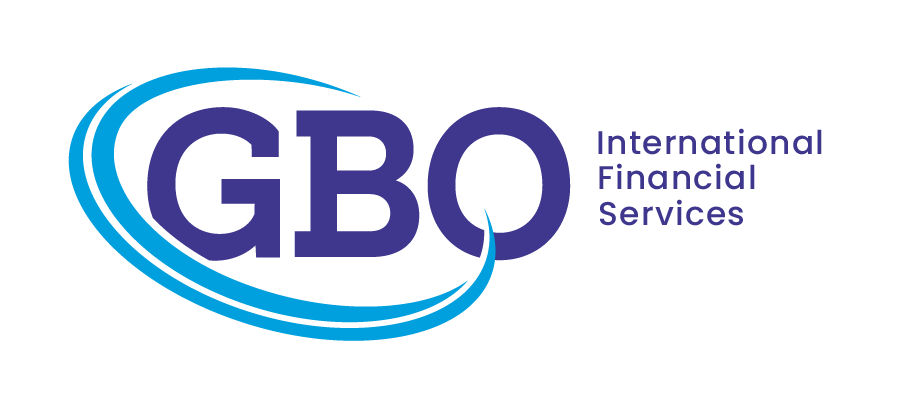How to open a high-risk merchant account?
To open a high-risk merchant account, you will need to find an acquiring bank that suits your business. The application process for a high-risk merchant account varies from bank to bank but there are some standard requirements. You will need to fill in an application form and have several documents prepared including your business incorporation certificate; shareholders’ certificate; a copy of your passport; utility bill (for proof of address); processing history and your business license. Also, to open a high-risk merchant account you may need to present further documentation. The high-risk merchant account provider will then assess your application; review whether your credit card processing history shows that you are within the acceptable chargeback threshold; assess your credit score; industry reputation and verify all of your personal and business information and documents. If you meet all the requirements you will be able to open a high-risk merchant account.
What is a high-risk merchant account for high volume?
Each merchant account provider has their idea of what is a high-risk merchant account for high volume. Most payment processing providers treat high-risk merchant accounts and high volume merchant accounts in the same way as they both are at high risk of fraud and chargebacks. High volume merchant accounts are usually offered to businesses with a turnover of over $100,000 and hundreds of small payments each day. When there are hundreds of single payments a day there is an increased risk of fraud and chargebacks. A high-risk merchant account is for businesses that operate in high-risk industries or have a bad credit history. A high-risk merchant account for high volume would provide payment processing services for businesses where there is a high volume of credit card payments and the business is considered high risk. If an account is just high volume and not considered a high-risk merchant account, then the provider may temporarily raise the processing limit if the business goes over the limit for the day.
What is a high-volume merchant account?
If you want to know what is high volume merchant accounts, then you probably have a business with a profitable turnover. Merchant service providers give account holders a process volume limit. A high-volume merchant account is for businesses that make over $100,000 in credit card transactions through hundreds of small single payments daily. These businesses need a higher processing volume limit which they can get with a high volume merchant account. With a large number of transactions, there is a higher risk of fraud and chargebacks and so the fees associated with high volume merchant accounts are higher. With a high volume merchant account, the processor may on occasion temporarily raise your processing limit when needed. After a period when you have processed orders, implemented fraud detection tools, improve your credit, and minimized chargebacks then your merchant account provider may increase your processing limit.
How to open merchant accounts for high-risk industries?
Find out how to open merchant accounts for high-risk industries by contacting your chosen high-risk merchant account provider. The requirements may differ and some merchant account providers specialize in clients from a specific industry. For the approval of merchant accounts for high-risk industries, you will need to provide basic information about you and your business, including name, address, and phone number. You will also need to submit supporting documents including (but not limited to) Articles of Incorporation, Articles of Organization, names of owners and benefactors, ID documents, 3-6 months of credit card processing statements and a void check or letter from your bank showing that your accounts are in good standing. If you work in an industry that requires licensing, for example, gaming, you will need to show your business license. The high-risk merchant account provider will take time to assess and verify your information before approving or denying your application.
How long it takes to open a high-risk merchant account?
Although low-risk merchant accounts can be opened in one or two days, how long it takes to open high-risk merchant accounts depends on several factors. It will take a minimum of three to five business days to have your high-risk merchant account approved. It can take up to five weeks to get approval. The reason that approval of a high-risk merchant account takes so much longer is that the provider needs to do a far more in-depth investigation into the applying business. The payment provider will take time to verify your credit history, business license, personal financial history, and risk level of your company. The process can become even longer if you have neglected to submit all the required documents or if the merchant bank provider requests further documents. You also need to get approval from your acquiring bank. You can help the process run smoothly by being up-front about your business and provide all the required documents.
What is the high-risk merchant account application process?
The high-risk merchant account application process begins when you find a merchant account provider. Compare fees, terms, customer support, reputation, and the services provided by the merchant account provider. Check whether the merchant account comes with a payment gateway so that you have an all-in-one solution. Next, you can begin the application process by gathering all the relevant documents required by the merchant account provider. These include financial statements, business license, credit history, personal financial history, ID documents, and your processing history including number and volume of transactions, refunds, and chargebacks. You may need to show 6 months of processing statements. Together with the supporting documents, you will need to fill in an application form with general business and personal details. Review the terms and conditions of the merchant account agreement in fine detail before signing.
Very-high-risk merchant accounts?
“Very-high-risk” merchant accounts are for businesses operating in high-risk industries. Very-high-risk accounts can also be for businesses with a bad financial and credit history; those selling services and products to countries known for high levels of fraud and businesses with a high credit card transaction volume. If a business has been rejected by several acquiring banks that are unwilling to take on the risk, then a very-high-risk merchant account is needed. It may be difficult to get a very-high-risk merchant account, but it is not impossible. The application process may be more complex, more supporting documents may be required and the fees will be higher but very-high-risk merchant accounts are obtainable.
What are merchant account requirements?
The requirements for setting up a merchant account vary depending on the provider. Ask your provider what are merchant account requirements. To open a merchant account first establish a business bank account. Then choose a merchant account provider and make your application. The application process will include providing supporting documents to show the legitimacy of your business, estimated processing volume, your credit history, and details about your business operation. Merchant account requirements usually include your business license, physical address, application form, personal ID documents, Articles of Incorporation, PCI compliance, business plan, voided check, and business policies.
What are merchant account fees?
Merchant account fees vary depending on your provider and your business. Generally, you will be required to pay an application fee as well as a percentage of the transactions and a per-transaction amount. Your merchant account provider will also charge a fee for chargebacks to cover the administrative costs of processing. A rolling reserve is held by the bank to protect against unexpected chargebacks and fraudulent activities. The rolling reserve can be about 5-10% of the credit card processed volume. The rolling reserve is held for a defined period and then released back to the business. Other merchant account fees may be a set-up fee, a monthly fee, an annual fee, PCI fees, and an early termination fee. Read the terms and conditions carefully to make sure you know what you are going to be charged for your merchant account.
What are the best merchant accounts for high risk?
If your business is in a high-risk industry or has any risk of financial failure, you need to find out what are the best merchant accounts for high risk. Among the best merchant accounts for high risk are the payment providers Payment Cloud; Durango; Soar Payments; Payline Data; Easy Pay Direct and SMB Global. The best merchant accounts for high-risk businesses are payment providers that specialize in high risk. Let GBO help you to find a high-risk payment provider that offers the lowest rates, great customer service, and a favorable contract for your high-risk business.
How to open a high-risk merchant account?
To open a high-risk merchant account, you will need to find an acquiring bank that suits your business. The application process for a high-risk merchant account varies from bank to bank but there are some standard requirements. You will need to fill in an application form and have several documents prepared including your business incorporation certificate; shareholders’ certificate; a copy of your passport; utility bill (for proof of address); processing history and your business license. Also, to open a high-risk merchant account you may need to present further documentation. The high-risk merchant account provider will then assess your application; review whether your credit card processing history shows that you are within the acceptable chargeback threshold; assess your credit score; industry reputation and verify all of your personal and business information and documents. If you meet all the requirements you will be able to open a high-risk merchant account.
What is a high-risk merchant account for high volume?
Each merchant account provider has their idea of what is a high-risk merchant account for high volume. Most payment processing providers treat high-risk merchant accounts and high volume merchant accounts in the same way as they both are at high risk of fraud and chargebacks. High volume merchant accounts are usually offered to businesses with a turnover of over $100,000 and hundreds of small payments each day. When there are hundreds of single payments a day there is an increased risk of fraud and chargebacks. A high-risk merchant account is for businesses that operate in high-risk industries or have a bad credit history. A high-risk merchant account for high volume would provide payment processing services for businesses where there is a high volume of credit card payments and the business is considered high risk. If an account is just high volume and not considered a high-risk merchant account, then the provider may temporarily raise the processing limit if the business goes over the limit for the day.
What are high-volume merchant accounts?
If you want to know what is high volume merchant accounts, then you probably have a business with a profitable turnover. Merchant service providers give account holders a process volume limit. A high-volume merchant account is for businesses that make over $100,000 in credit card transactions through hundreds of small single payments daily. These businesses need a higher processing volume limit which they can get with a high volume merchant account. With a large number of transactions, there is a higher risk of fraud and chargebacks and so the fees associated with high volume merchant accounts are higher. With a high volume merchant account, the processor may on occasion temporarily raise your processing limit when needed. After a period when you have processed orders, implemented fraud detection tools, improved your credit, and minimized chargebacks, then your merchant account provider may increase your processing limit.
How to open merchant accounts for high-risk industries?
Find out how to open merchant accounts for high-risk industries by contacting your chosen high-risk merchant account provider. The requirements may differ and some merchant account providers specialize in clients from a specific industry. For the approval of merchant accounts for high-risk industries, you will need to provide basic information about you and your business, including name, address, and phone number. You will also need to submit supporting documents including (but not limited to) Articles of Incorporation, Articles of Organization, names of owners and benefactors, ID documents, 3-6 months of credit card processing statements and a void check or letter from your bank showing that your accounts are in good standing. If you work in an industry that requires licensing, for example, gaming, you will need to show your business license. The high-risk merchant account provider will take time to assess and verify your information before approving or denying your application.
How long it takes to open a high-risk merchant account?
Although low-risk merchant accounts can be opened in one or two days, how long it takes to open high-risk merchant accounts depends on several factors. It will take a minimum of three to five business days to have your high-risk merchant account approved. It can take up to five weeks to get approval. The reason that approval of a high-risk merchant account takes so much longer is that the provider needs to do a far more in-depth investigation into the applying business. The payment provider will take time to verify your credit history, business license, personal financial history, and risk level of your company. The process can become even longer if you have neglected to submit all the required documents or if the merchant bank provider requests further documents. You also need to get approval from your acquiring bank. You can help the process run smoothly by being up-front about your business and provide all the required documents.
What is the high-risk merchant account application process?
The high-risk merchant account application process begins when you find a merchant account provider. Compare fees, terms, customer support, reputation, and the services provided by the merchant account provider. Check whether the merchant account comes with a payment gateway so that you have an all-in-one solution. Next, you can begin the application process by gathering all the relevant documents required by the merchant account provider. These include financial statements, business license, credit history, personal financial history, ID documents, and your processing history including number and volume of transactions, refunds, and chargebacks. You may need to show 6 months of processing statements. Together with the supporting documents, you will need to fill in an application form with general business and personal details. Review the terms and conditions of the merchant account agreement in fine detail before signing.
Very-high-risk merchant accounts
Very high-risk merchant accounts are for businesses operating in high-risk industries. Very high-risk accounts can also be for businesses with a bad financial and credit history; those selling services and products to countries known for high levels of fraud and businesses with a high credit card transaction volume. If a business has been rejected by several acquiring banks that are unwilling to take on the risk, then a very high-risk merchant account is needed. It may be difficult to get a very high-risk merchant account, but it is not impossible. The application process may be more complex, more supporting documents may be required and the fees will be higher but very high-risk merchant accounts are obtainable.
What are merchant account requirements?
The requirements for setting up a merchant account vary depending on the provider. Ask your provider what are merchant account requirements. To open a merchant account first establish a business bank account. Then choose a merchant account provider and make your application. The application process will include providing supporting documents to show the legitimacy of your business, estimated processing volume, your credit history, and details about your business operation. Merchant account requirements usually include your business license, physical address, application form, personal ID documents, Articles of Incorporation, PCI compliance, business plan, voided check, and business policies.
What are merchant account fees?
Merchant account fees vary depending on your provider and your business. Generally, you will be required to pay an application fee as well as a percentage of the transactions and a per-transaction amount. Your merchant account provider will also charge a fee for chargebacks to cover the administrative costs of processing. A rolling reserve is held by the bank to protect against unexpected chargebacks and fraudulent activities. The rolling reserve can be about 5-10% of the credit card processed volume. The rolling reserve is held for a defined period and then released back to the business. Other merchant account fees may be a set-up fee, a monthly fee, annual fee, PCI fee, and an early termination fee. Read the terms and conditions carefully to make sure you know what you are going to be charged for your merchant account.
 https://www.gbofintech.com/wp-content/uploads/2022/03/Crypto1-1.jpg
610
2500
admin2
https://www.gbofintech.com/wp-content/uploads/2024/05/GBO_logo-transperance-png.png
admin22022-03-10 11:45:332022-04-14 11:37:55Open Cryptocurrency Business Bank Account
https://www.gbofintech.com/wp-content/uploads/2022/03/Crypto1-1.jpg
610
2500
admin2
https://www.gbofintech.com/wp-content/uploads/2024/05/GBO_logo-transperance-png.png
admin22022-03-10 11:45:332022-04-14 11:37:55Open Cryptocurrency Business Bank Account









